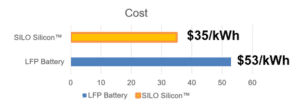

The dry electrode process is transforming battery manufacturing by eliminating solvents and streamlining production. Unlike the traditional wet slurry method, the dry electrode coating process relies on the use of special binders that can form an electrode coating without being dissolved in a solvent, such as fluoropolymer binders with Teflon

Charged recently chatted with Tejas Upasani, Global EV Technology Manager at Chemours to learn more about the benefits and challenges of dry electrode technology.
One of the key benefits of the dry electrode process is its positive impact on battery performance. By enabling thicker electrode layers without compromising structural integrity, this method allows for increased energy density, which can enhance EV range and efficiency.
This approach not only improves the overall performance of lithium-ion batteries but also drastically lowers manufacturing costs, and many major players in the EV industry are exploring the adoption of dry electrode technology to streamline their battery production.
The dry process does come with its own set of technical challenges, particularly around adhesion and uniformity. Ensuring the electrode material bonds effectively to current collectors without solvents is a primary hurdle, as is achieving consistent mixing of components. In this video, Upasani explains how Chemours is addressing these challenges through advanced Teflon PTFE polymer formulations.








